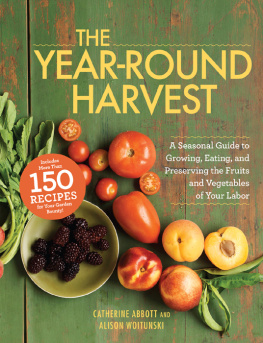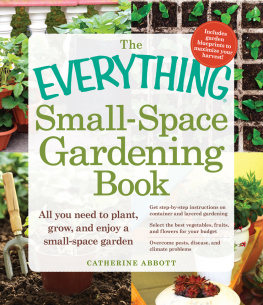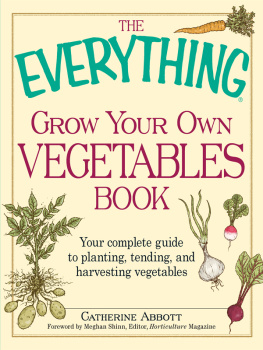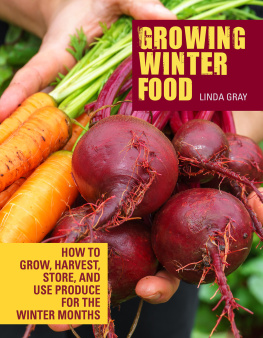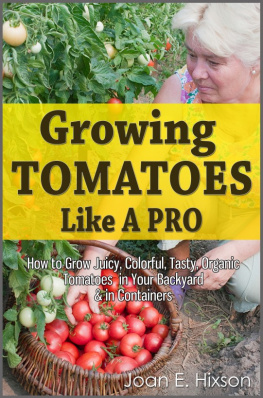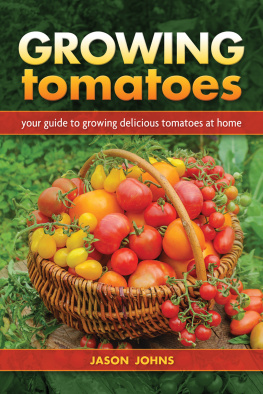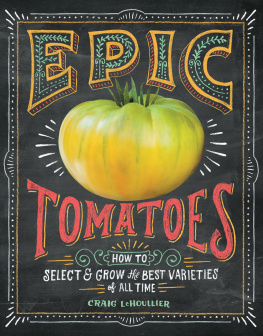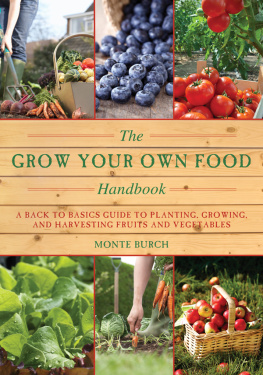INTRODUCTION
For the at-home gardener, the growing season hums with productivity, life, and nourishment. Basic to human nature, the garden is a place where self-sufficiency and independence reign. Growing your own food allows you to exist outside the confines of the grocery store, giving you choices you might otherwise miss. Wanting to create a year-round lifestyle of at-home food production and consumption is a natural next step for those who relish the rhythm and health of the growing season. The Year-Round Harvest is designed to facilitate the steps necessary to extend the enjoyment of homegrown food well beyond the summer harvest. By learning how to grow earlier and for longer periods, learning the methods and options of growing indoors, and how to preserve and store your harvest, you are on your way to enjoying all the benefits of homegrown food year-round.
The Year-Round Harvest is a practical guide that approaches at-home gardening with a respect for, and understanding of, traditional and time-proven practices, while also embracing new technologies and developments in agriculture and food preservation. The beauty and simplicity of food production is within these pagesbut youll also find a plethora of new ideas and methods. This combination of traditional and modern approaches allows you to design a year-round system practical for your lifestyle. Whether you live in an urban, suburban, or rural area, whether you have no budget constraints or are growing your own food in an effort to be as thrifty as possible, The Year-Round Harvest provides the information necessary to create and implement an at-home food system that meets all your needs.
In this step-by-step approach, you have the freedom to decide which methods appeal to you and exactly how you can adapt them to your own garden. With easy-to-read illustrations, recipes, and instructions, you will learn how to properly assess your growing site, make soil amendments, and protect your crops from colder weather. Keeping the diversity of homes and growing spaces in mind, The Year-Round Harvest includes creative approaches to maximize your food production no matter what challenges you are faced with. You will learn when and how to use trellises, raised beds, terraces, and container gardens, as well as the ins and outs of drying, canning, pickling, freezing, and otherwise storing your food. How you decide to grow and store your food is up to you, and with The Year-Round Harvest as your guide, you will be able to make the best decisions for you and your family.
As the gardener and food enthusiast knows, the satisfaction of shared meals and bountiful harvests is a joy worth extending throughout the year. Our gardens and what we eat connect us to lifes most meaningful ingredientsthe land that sustains us, and the people around our table. With The Year-Round Harvest as your guide, you are soon to be enjoying the fruits of your labor throughout the year.
CHAPTER 1
YEAR AT
A GLANCE
Understanding the strengths and challenges of your outdoor space is the first step to planning a successful garden. By maximizing strengths, thinking creatively, and viewing challenges as guidelines rather than limitations, your garden will be a unique reflection of your home and personality as well as an optimum growing environment.
Assessing the Basics
Sunlight, water, and soil are the key ingredients to a productive garden. Depending on the area you have to work with, the quality and quantity of these components can differ widely and can affect how you design your garden. Other factors, like wind, pests, drainage, and space can also affect how and what you can grow. The gardener turning an expansive suburban lawn into a vegetable garden is working with different variables than the urban resident converting a rooftop into a place to grow food. Both of these scenarios, and everything in between, can easily result in a beautiful and productive garden so long as all factors are assessed and understood early on.
Sunlight
Open sunlight for your garden is your top priority when deciding where to plant. While not all crops require the same amount of sunlight as others, the majority of your plants will need direct sunlight for at least 6 hours a day during the height of their growth.
Gardening in a Larger Space
If you have a yard or an outdoor space large enough to provide you with options for garden placement, then chances are you already have some idea as to where you would like to put your garden. There might be a spot in the yard that looks too vacant, or an area that you could access easily from the kitchen. Maybe you want the garden to be near an outdoor eating area or a space where your children like to play. When determining the consistency and directness of sunlight for your garden placement, you will want to observe the location you have in mind, but choose some other sites to observe as well.
By pinpointing and observing multiple sites, you can better gauge the quality of sunlight in each area. One spot might seem sunny enough on its own, but when compared to a different section of your outdoor space, you may notice that the sunlight in your spot is less present at certain points throughout the day, or that there is more consistent shade than you expected. It could turn out that the area that you were imagining for your garden is not the best option, but if you observe a few different locations at once, youll be able to adapt your plans.
Hardiness Plant Zones
Hardiness plant zones are growing zones based on the average annual minimum temperature of an area. The U.S. Department of Agriculture (USDA) divides North America into eleven zones based on temperature. In order to understand the hardiness of certain plants, when to plant, the best varieties for your garden, and how to care for plants throughout the colder months, you need to know which hardiness zone you are growing in.

Hardiness Plant Zone Map
Working with a Small Space
If there isnt much option for where your garden can gofor example if you have a very small yard, patio, deck, or an assigned community garden plotthen the goal of making your growing-site observations is to understand the type of sunlight your garden has access to. Being familiar with this beforehand will allow you to plant strategically. When observing your space, you want to determine if your garden area receives mostly direct sunlight, mostly shade, or a combination of both. Once you determine which category your garden space fits into, you can plant crops that will thrive in your particular environment.

